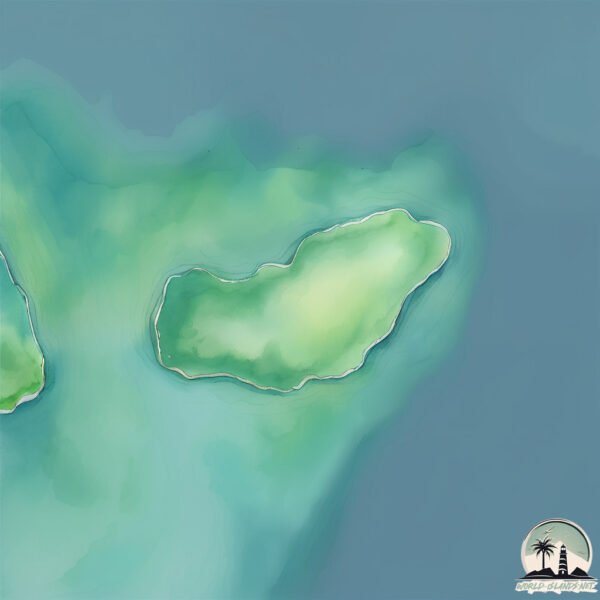Pulau Kore

Welcome to Pulau Kore, a Tropical island in the Arafura Sea, part of the majestic Indian Ocean. This guide offers a comprehensive overview of what makes Pulau Kore unique – from its geography and climate to its population, infrastructure, and beyond. Dive into the details:
- Geography and Size: Explore the island’s size and location.
- Climate and Weather: Weather patterns and temperature.
- Topography and Nature: Uncover the natural wonders of the island.
- Infrastructure and Travelling: Insights on reaching, staying, and making the most of your visit.
- News and Headlines: Latest News.
Geography and size of Pulau Kore
Size: 0.599 km²
Coastline: 3.3 km
Ocean: Indian Ocean
Sea: Arafura Sea
Continent: Oceania
Pulau Kore is a Tiny Island spanning 0.599 km² with a coastline of 3.3 km.
Archipel: Melanesia – A subregion of Oceania in the southwestern Pacific Ocean, including countries like Fiji, Solomon Islands, and Vanuatu, known for their diverse cultures and languages.
Tectonic Plate: Timor – A small tectonic plate in the Timor region, primarily under the Timor Sea. It’s involved in the collision between the Australian and Eurasian plates, contributing to the region’s seismic activity and the uplift of the island of Timor.
The geographic heart of the island is pinpointed at these coordinates:
Latitude: -7.84700267 / Longitude: 131.45211331
Climate and weather of Pulau Kore
Climate Zone: Tropical
Climate Details: Tropical Savanna, Wet
Temperature: Hot
Climate Characteristics: Defined by distinct wet and dry seasons with high temperatures year-round. Pronounced rainfall occurs during the wet season, while the dry season is marked by drought.
Topography and nature of Pulau Kore
Timezone: UTC+09:00
Timezone places: Asia/Tokyo
Max. Elevation: 5 m
Mean Elevation: 4 m
Vegetation: Open Woodland
Tree Coverage: 95%
The mean elevation is 4 m. The highest elevation on the island reaches approximately 5 meters above sea level. The island is characterized by Plains: Flat, low-lying lands characterized by a maximum elevation of up to 200 meters. On islands, plains are typically coastal lowlands or central flat areas.
Dominating Vegetation: Open Woodland
Characterized by sparsely distributed trees with open canopy allowing sunlight to penetrate, supporting grasses and shrubs underneath. Often found in drier or transitional environments. Pulau Kore has a tree cover of 95 %.
Vegetation: 3 vegetation zones – Moderately Diverse Island
These islands start to show a broader range of ecological niches. With three vegetation zones, they may offer a mix of ecosystems like coastal areas, inland woods, and perhaps a distinct wetland or dry area. This diversity supports a wider range of flora and fauna, making these islands more ecologically complex than those with minimal diversity.
Infrastructure and Travelling to Pulau Kore
Does the island have a public airport? no.
There is no public and scheduled airport on Pulau Kore. The nearest airport is Mathilda Batlayeri Airport, located 12 km away.
Does the island have a major port? no.
There are no major ports on Pulau Kore. The closest major port is SAUMLAKI, approximately 22 km away.
The mean population of Pulau Kore is 27 per km². Pulau Kore is Gently Populated. The island belongs to Indonesia.
Continuing your journey, Yamdena is the next notable island, situated merely km away.
Indonesia is classified as Emerging region: MIKT: Mexico, Indonesia, South Korea, and Turkey – Economies recognized for their development potential and emerging market status. The level of income is Lower middle income.
News – Latest Updates and Headlines from Pulau Kore
Stay informed with the most recent news and important headlines from Pulau Kore. Here’s a roundup of the latest developments.
Please note: The data used here has been primarily extracted from satellite readings. Deviations from exact values may occur, particularly regarding the height of elevations and population density. Land area and coastline measurements refer to average values at mean high tide.
